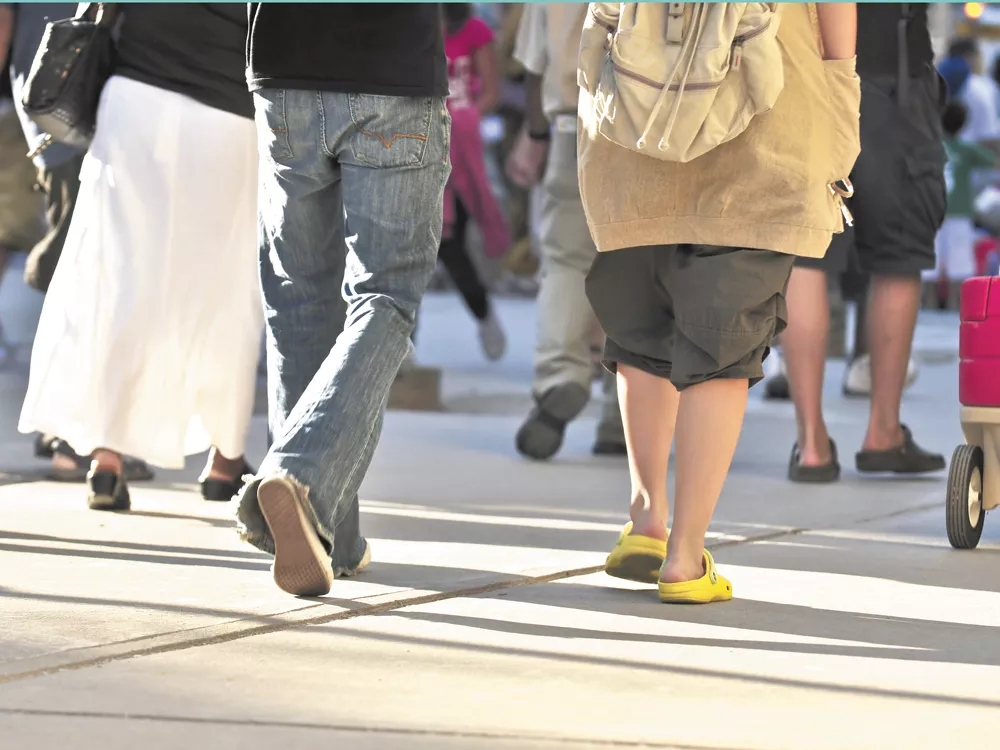Richard Rush decided he needed a healthy New Year’s Eve resolution. After four sedentary years as an elected official, the outgoing Spokane City Council member decided to walk more in 2012.
As his feet hit the ground, Rush learned that walking in the Lilac City can be a dangerous dance around hordes of cars. When he tries to cross Southeast Boulevard to get to the Perry District, “There’s cars flying back and forth,” Rush says.
Rush was one of a handful spread across a meeting room in the West Central Community Center in late April to hear about the city’s proposed pedestrian master plan.
The plan outlines the neighborhoods considered significant for walkers. The map features a smattering of red blobs that mark where more pedestrian infrastructure is needed. Many of Spokane’s north-to-south arteries are marked: North Monroe Street, Hamilton Street, Market Street, South Grand Boulevard. Around these spots on the map are oceans of lower priorities, including Division Street.
The plan sets sweeping goals for the priority areas. Within 10 years, the plan would fix all identified sidewalk corners without the wheelchair-friendly dips and grips. In that same 10 years, 80 percent of missing sidewalks in priority zones would be installed. It’s a lot of concrete. Spokane is missing more than 650 miles of sidewalks, according to the city.
But will the pedestrian plan work? “It probably should have been done decades [ago], so it is exciting to see it finally coming together,” Kitty Klitzke, Eastern Washington program director of Futurewise, says in an email.
Klitzke says Futurewise, a growth management group, supports the draft plan. But the plan needs to dig deeper to get Spokanites to a walking place.
“It does not have the level of analysis necessary to establish baselines or thresholds for what types of pedestrian infrastructure are needed at where,” she says.
At least the money is there. The Complete Streets ordinance passed last year by the Spokane City Council funds sidewalk construction every time major street repair is undertaken, she says.
And funding has been set aside for such projects.
“If
this trend continues, Spokane will be vastly more walkable in 10 years
and completely pedestrian-friendly in 30 years,” she says.





















